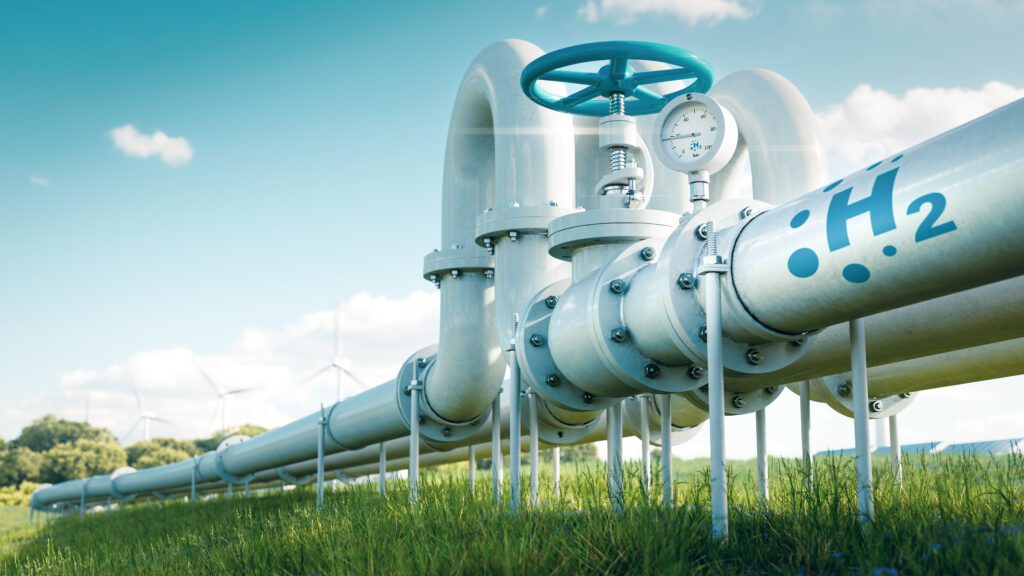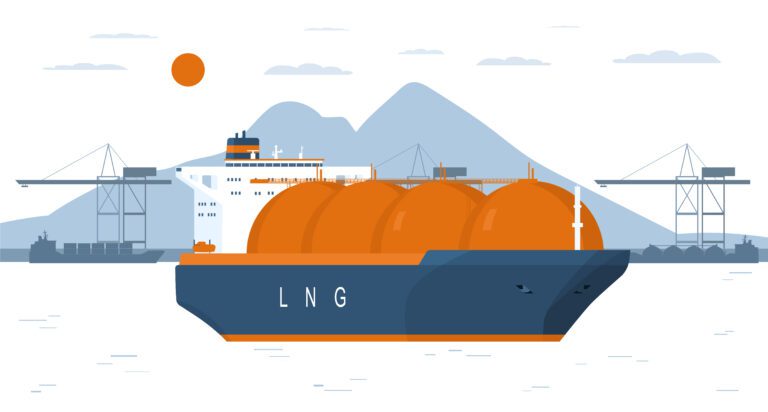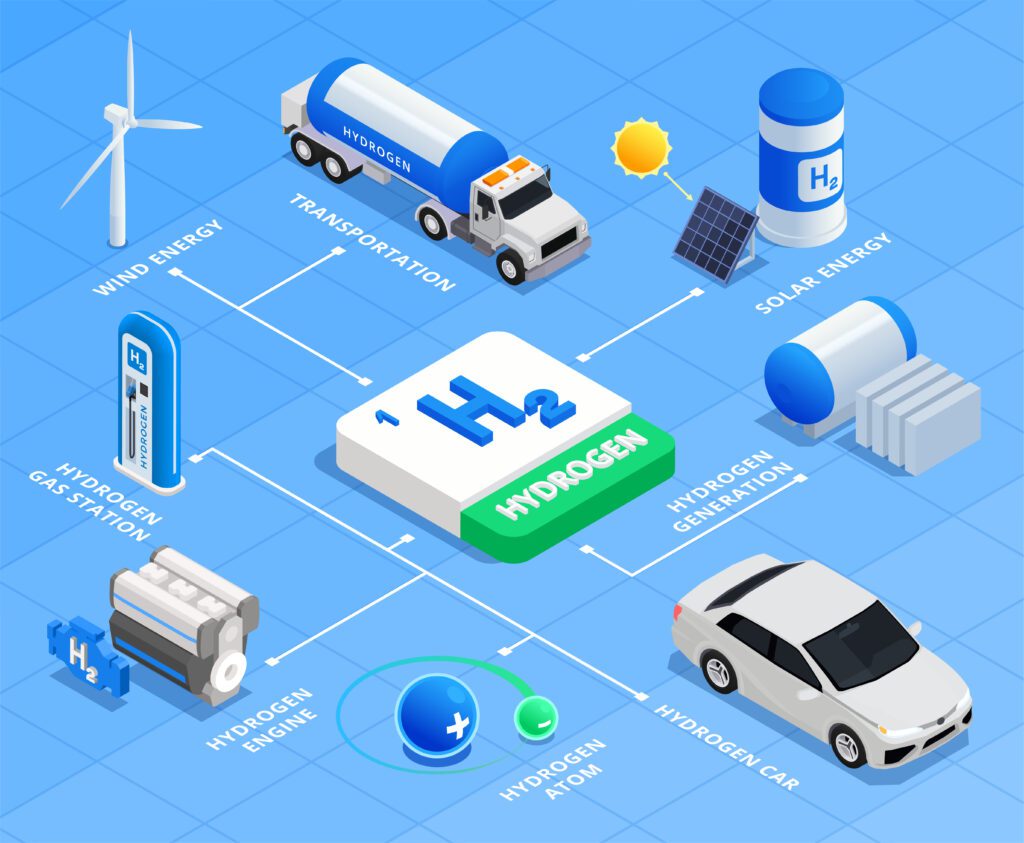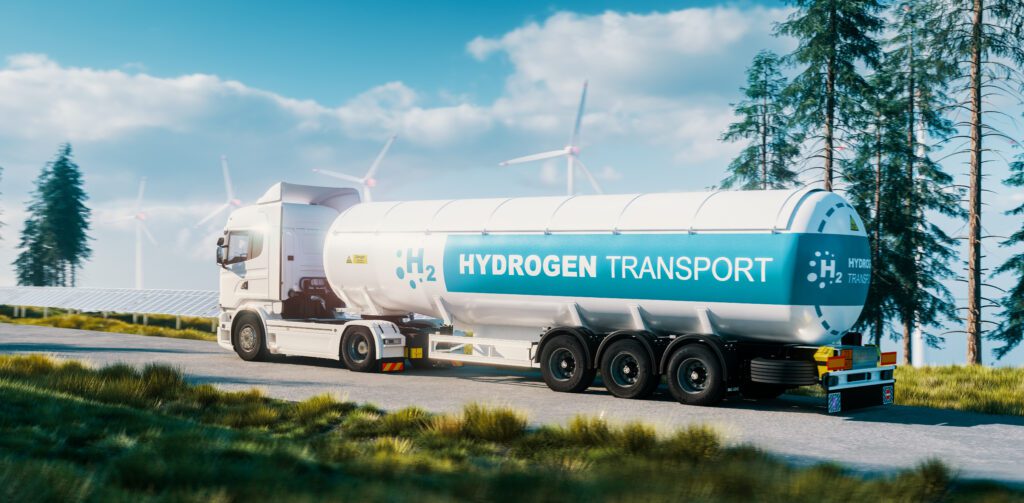The current energy transition constitutes a process that will fundamentally change the structure of the energy sector, the ways in which energy is produced, and the generic structure of energy fuels and raw materials. The main vector of the European Union’s[1] energy and climate policy is the achievement of so-called climate neutrality, associated with the long-term reduction of greenhouse gas emissions, particularly carbon dioxide. The pursuit of this goal is and will be supported by regulatory and stimulus mechanisms. This will translate directly into the modernization of generating capacity and diversification of the structure of power generation in the coming years and decades. The dynamics of change in Europe seem to be of increasing value. There is a strong trend of replacing capacity in the coal-based electric power industry towards less carbon-intensive fuels such as natural gas and, in particular, renewable energy sources (photovoltaics and wind power plants). For instance, in the European Union, within the period of 2018-2019, newly installed RES and natural gas-based power generation capacity almost offset the extinguished coal-based capacity[2].

Taking into consideration the growing potential of RES, the second, and probably the key hero of the energy transition is hydrogen. It possesses two important characteristics. Firstly, hydrogen constitutes an emission-free fuel, thus meeting the climate goals of the energy transition. Secondly, its production can take place anywhere in the world. And this is an extremely crucial factor distinguishing hydrogen from traditional fuels derived from limited fossil resources.
A key factor affecting the current global fuel and hydrocarbon market is the limited availability of these resources and their geographic concentration. The long history of oil production has created a specific value chain: from the locations of oil deposits (producer countries, such as those in the Middle East) through the supply chain (including key transportation by sea) to the receiving markets (such as Europe). Nowadays, the above ecosystem functions as a global oil market (commodity), where the important role is played firstly by privileged players with oil deposits (e.g. OPEC countries), and secondly by sensitive supply and transport routes. Countries and regions dependent on imports of this commodity are exposed to the risk of a reduction or suspension of supply, with the most spectacular example being the 1973 oil crisis[1], which affected all highly industrialized countries and all areas of the world economy. Therefore, controlling oil (and natural gas) production sites and transport routes constitute a strategic element in the modern geopolitics of many countries.
A peculiarity of oil is its ease of transportation, including deep-sea transport – this does not require modern advanced technology and allows long-distance transportation between continents. It is now a globally – traded commodity that is traded globally (commodity, liquidity, churn ratio).
In the case of natural gas, the story was somewhat different due to the completely different (more difficult) technology for transporting the fuel in its gaseous state. Traditionally, natural gas from the place of extraction (e.g., the Yamal peninsula) is transported overland or by sea via pipelines to the target markets. However, the range of natural gas transport via pipelines is much more limited than the functioning oil supply chain, and therefore the range of pipeline-based transport is limited to a maximum distance of about 4.000 kilometers. Natural gas, like oil, is also a fuel susceptible to supply constraints or stoppages, as the European and Polish markets have experienced many times in past decades. Russia, one of the two largest suppliers of natural gas to Europe, continuously employs this fuel as a tool to exert political and economic pressure on other countries[2].

The availability and proliferation of technologies for condensing natural gas into liquid form, or so-called LNG (liquefied natural gas), enabled it to function as a global commodity similar to oil with the possibility of long-distance transportation by sea[1], as exemplified by LNG shipments from distant Qatar or the US to Poland.
Summarizing the above considerations, it is essential to emphasize the fact that the current energy ecosystem of oil and natural gas is based on imports of raw materials from the region of occurrence to the consumer market. This implies a number of risks, such as supply constraints or stoppages and high vulnerability to price changes. Unfortunately, a very unpleasant and current example of price sensitivity is the situation on the natural gas market in September and October 2021, when gas prices in Europe have increased by 600% since the beginning of the year (according to World Trade Organization data). Therefore, an important element of the energy policy of many countries, including Poland in particular, is the diversification of sources and routes of supply of energy resources. Projects such as the Baltic Pipe pipeline and the expansion of the Świnoujście gas port are of strategic importance for the Polish energy sector.
[1] It is interesting to note that the condensation of natural gas reduces its volume more than 600 times at -162 degrees C.
The ongoing energy transition towards zero- or low-emission fuels and a bet on renewable energy sources also potentially entails a change in the existing fossil fuel supply chain with all the implications that characterize the oil and gas market. In particular, the widespread production of hydrogen has the potential to change the prevailing paradigm of the oil and gas value chain.

It is generally observed in the public debate on climate change and the energy transition that there is now an unprecedented political and business drive for clean hydrogen. Over the past year in Europe, a number of institutions and national governments have announced their hydrogen strategies, including:
- On June 3, the Norwegian government adopted the Regjeringens hydrogenstrategi,
- On June 10, the German government adopted the Nationale Wasserstoffstrategie,
- On July 8, the European Commission presented a document entitled: A hydrogen strategy for a climate-neutral Europe,
- On September 10, the French government adopted the Stratégie nationale pour le développement de l’hydrogène décarboné en France.
Key players in the global energy market are also actively adopting to this trend. The U.S. Department of Energy published a 2020 Hydrogen Program Plan on November 12 that, among other things, places a premium on so-called “purple” hydrogen (whose production is based on nuclear energy sources). It even appears that on October 22, 2020, the government of the Russian Federation officially adopted a roadmap for hydrogen energy development. This is especially interesting that it may be a new field of geopolitical dispute and economic rivalry just as it is seen in the case of other energy carriers. The Polish energy system has repeatedly experienced supply disruptions in the segment of natural gas and oil being dependent on imports of these raw materials. Therefore, the Polish economic interest should take into account the possibility of self-generation of hydrogen (as an energy carrier and fuel) based as much as possible on domestic resources and technologies. The adoption of the Polish Hydrogen Strategy[1] in November of this year should be noted with appreciation. This document is part of global, European and national efforts to build a low-carbon economy.
[1] https://www.gov.pl/web/klimat/rzad-przyjal-polska-strategie-wodorowa

Hydrogen can be considered in at least three categories: as an energy carrier, a clean fuel and an industrial raw material. Hydrogen is a very flexible and versatile clean energy carrier, as it can be produced from almost any energy source, can be used in a wide range of industrial and technological applications, and does not emit CO2 during combustion, only water vapor as a by-product. As a clean energy carrier, hydrogen can be transported, stored and, to some extent, even blended with current fuels. This provides a key advantage for achieving deep decarbonization in an affordable and competitive way compared to other solutions being considered for the energy transition. Hydrogen can assist in solving a number of important problems in the energy industry, such as buffering intermittent electricity production from RES, balancing power grids and seasonal storage, as well as decarbonizing a number of sectors – including sectors that are difficult to reduce or shut down, such as iron and steel production, essential in today’s economy, is highly energy intensive and extremely difficult to decarbonize.
As a fuel, hydrogen can be considered as an interchangeable and portable source of power (hydrogen cells or direct combustion of hydrogen in the engine compartment) in a wide range of transportation applications, not only road but also rail, sea and even air. Hydrogen fuel can be applied to industrial facilities, including even power plants or combined heat and power plants, e.g., in Los Angeles there are plans to build an 840MW hydrogen power plant[1] powered by a mixture of natural gas (70%) and hydrogen (30%), which would come online as early as 2025, thus reducing carbon dioxide emissions by 75% compared to the currently operating coal-fired plant. It should be noted that approaches to the use of hydrogen as a fuel are being studied extensively around the world. Therefore, hydrogen can help not only to improve air quality, which is what it is intuitively associated with, but can serve to strengthen energy security sensu largo.
The creation of local hydrogen production and consumption chains within a region, voivodship and even within a company’s local process should be promoted. The value chain for H2 and LH2 is only just emerging, with individual and as yet unconnected components developing, i.e. modes of production (e.g. electrolyzers), large-scale maritime transportation using modern gas carriers and receiving terminals, and on a smaller scale land modal transportation using tankers. A market for hydrogen consumption is emerging. Advanced technological solutions are already in use, i.e., by Kawasaki, which has unveiled a modern gas carrier capable of transporting 40,000m3 of liquid hydrogen and built the world’s first liquid hydrogen receiving terminal – the Kobe LH2 Terminal (Hy touch Kobe[2]). Both of these projects are designed to transport liquid hydrogen produced in Australia to the market in Japan. A completely separate example is the offer for individual consumers in the form of hydrogen-powered vehicles that have been available for a long time, such as the Toyota Mirai[3]. At this point, it is still too early to discuss a grown and shaped value chain for hydrogen and modern technologies harnessing this resource as a fuel and energy carrier. Many development scenarios are still possible.
[1] https://www.h2-international.com/2020/09/15/a-hydrogen-plant-to-fuel-los-angeles/
[2] https://global.kawasaki.com/en/corp/newsroom/news/detail/?f=20201203_2378
[3] https://www.toyota.pl/new-cars/mirai/

In conclusion, the role of hydrogen as an energy carrier and fuel is in the area of enormous interest around the world, and particularly in Europe the production of so-called “green” hydrogen is regarded as an ideal solution in the fight for climate protection in the energy transition. Further development and widespread adoption of hydrogen will largely depend on the currently shaped policies and strategies. As far as Poland is concerned, we are currently dealing with the process of creating a legislative framework and development incentives with the only emerging market for modern hydrogen technologies and their industrial and individual application. Therefore, supporting the emergence of a local technology-industrial chain that is zero- or low-emission based on hydrogen (production, transportation, consumption) is highly demanded. This presents a challenge of modern times as well as creativity and ambition for Polish entrepreneurs.
* The author is a manager and expert who has been involved in the energy industry for 15 years. From 2009 to 2017, he was associated with Gaz-System, where he was in charge of developing and implementing a multi-year investment program for new gas infrastructure in Poland. With partners from Denmark and Norway, he negotiated the business framework for the Baltic Pipe project. The author was responsible for the expansion of cross-border connections with Lithuania, Slovakia, the Czech Republic and Ukraine. In 2017-2018, he served as a Board Member of ENTSOG European Network of Transmission System Operators for Gas in Brussels. Since 2017 he has been associated with Polskie LNG where he held the position of a Managing Director, and since 2018 he has served as a President of the Board. During this time, the company significantly improved its performance in receiving and unloading gas carriers from all over the world, as well as loading tanker trucks. He was responsible for the preparation, launch and implementation of the Swinoujscie LNG Terminal Expansion Programme. He is currently affiliated with GK PERN. Graduate of the Warsaw University of Technology, and the Warsaw School of Economics. Holder of TenStep Project Management, certificate No. 10147. Participant of the High Potentials Leadership Program at Harvard Business School in the USA. Full professional resume: www.linkedin.com/in/pjakub

